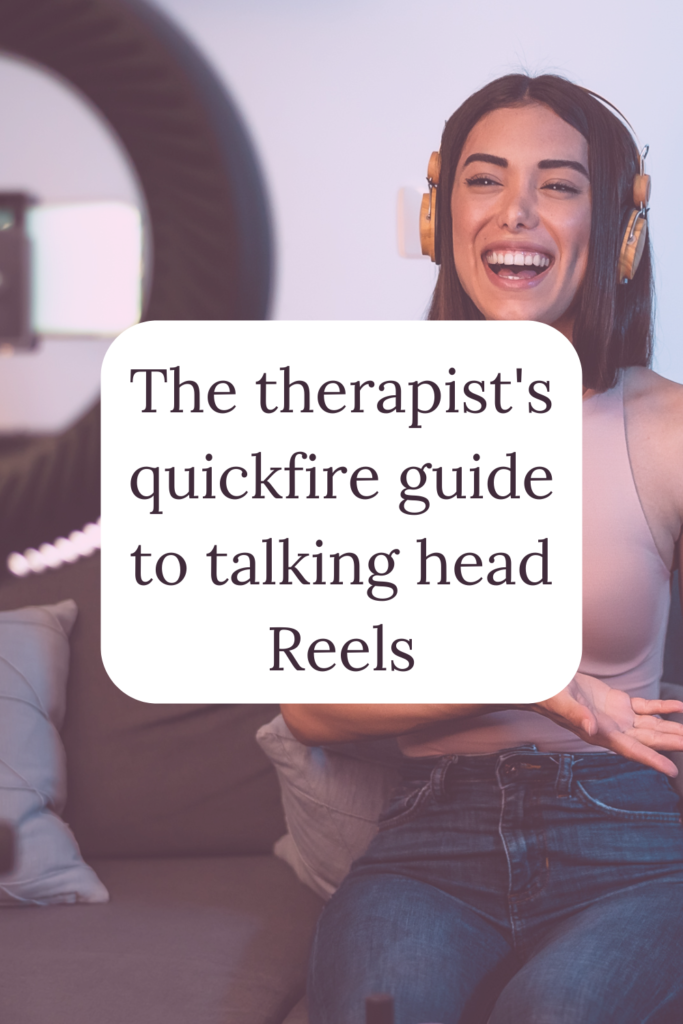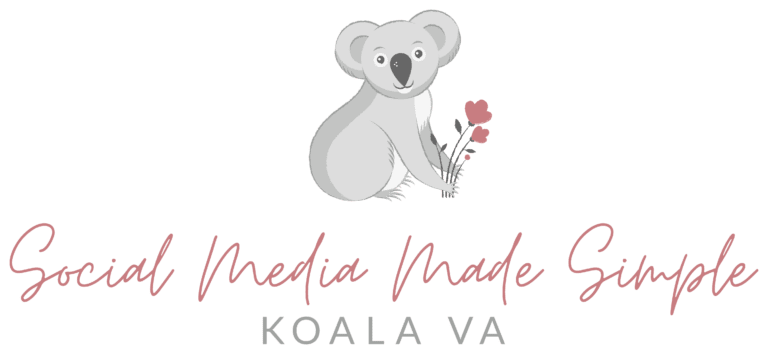Creating engaging and high-quality Reels can be a powerful way to reach new therapy clients, showcase your expertise, and build your personal brand.
But many therapists struggle with the technical and creative aspects of producing Reels that resonate with their target audience.
In this article, we’ll explore some common challenges therapists face when creating talking-head style Reels and provide practical tips for overcoming them.

Overcoming Common Issues with Talking Head Reels
Feeling Uncomfortable on Camera
One of the most significant hurdles therapists face when creating Reels is feeling uncomfortable or awkward in front of the camera. This is entirely normal, especially if you’re not used to being on video. The key is to keep practising and remind yourself that it’s okay to make mistakes. In fact, embracing the imperfections can make your content more relatable and authentic.
Perfectionism and Getting the Perfect Take
Another common issue is feeling pressure to get the perfect take. This can lead to frustration and wasted time. Instead, focus on delivering your message clearly and concisely, and remember that you can always edit out any mistakes or awkward pauses later.
Getting the Visuals and Audio Right
Investing in Some Basic Audio Equipment
The quality of your visuals and audio can make or break your Reels. Poor lighting, background noise, or a cluttered environment can distract from your message and make your content less engaging. To ensure your Reels look and sound professional, consider investing in a few key pieces of equipment.
For audio, a lapel microphone or shotgun mic can help capture clear, crisp sound without background noise. If you’re on a tight budget, even a simple smartphone microphone can work well in a quiet room.
Lighting and Background
When it comes to lighting, natural light is your best friend. Try to record your Reels facing a window or outdoors in a shaded area. If natural light isn’t an option, consider investing in a ring light or softbox to create a flattering, even light source.
Finally, pay attention to your background. A simple, uncluttered backdrop will keep the focus on you and your message. If you’re recording at home, a plain wall or tidy bookshelf can work well.
Making Your Reels Engaging and Interesting
Starting with a Strong Hook
Now that you have the technical aspects down, it’s time to focus on creating content that resonates with your target audience. One effective technique is to start your Reels with a strong hook.
Here are 7 types of hooks you can try:
The Question Hook
- “Do you struggle with [common problem]?”
- “Want to know the secret to [desired outcome]?”
- “Ever wonder why [interesting fact or statistic]?”
The Curiosity Gap Hook
- “You won’t believe what happened when [intriguing story]”
- “I never thought [unexpected result] would work, but then I tried this…”
- “3 surprising ways to [achieve a goal] that actually work”
The Problem-Solution Hook
- “Tired of [common frustration]? Try this simple trick…”
- “Struggling to [overcome a challenge]? Here’s what you need to know”
- “[Number] effective strategies to [solve a problem] without [common obstacle]”
The Controversial Hook
- “Why [common belief] is actually holding you back”
- “The truth about [controversial topic] that no one talks about”
- “Is [popular trend] really worth the hype? Here’s what the experts say”
The Relatable Hook
- “If you’ve ever [common experience], you know how frustrating it can be”
- “3 things every [target audience] can relate to”
- “The one thing [successful people] do differently that you can start doing today”
The Visually Striking Hook
- Use bold, contrasting colours in your thumbnail or opening shot
- Incorporate eye-catching text overlays or graphics
- Start with an unexpected or unconventional visual (e.g., a close-up shot, a unique perspective)
The Quick Tip Hook
- “3 simple ways to [improve a skill] in under 5 minutes”
- “The one-minute hack for [achieving a goal] that actually works”
- “5 easy tips to [overcome a challenge] that you can start using today”
Using Storytelling Techniques
As you deliver your message, try to use storytelling techniques to make your content more engaging and memorable. Share success stories or use analogies and metaphors to illustrate your points.
Text Overlays and Accessibility
Another way to make your Reels more engaging is to use text overlays to highlight key points or questions. This not only makes your content more visually interesting but also helps with information retention and accessibility for viewers who may be watching without sound.
Keeping it Concise
Finally, keep your Reels concise and to the point. If you have more to say, consider breaking it up into a series of shorter videos.
Making it Easier on Yourself
Batch Recording Reels
Creating consistent, high-quality Reels can be time-consuming, but there are several strategies you can use to make the process more efficient and sustainable.
One approach is to batch record your Reels. Set aside a few hours each month to record multiple Reels at once, then release them on a schedule throughout the month. This can help you maintain a consistent posting schedule without feeling overwhelmed.
Repurposing Content from Other Platforms
Another time-saving technique is to repurpose content from other platforms. If you have a blog, podcast, or YouTube channel, consider adapting some of that content into bite-sized Reels. You can also transcribe your Reels and turn them into blog posts or social media captions.
Collaborating with Colleagues
Finally, don’t be afraid to collaborate with colleagues or peers in your industry. Invite guest experts to join you on Reels, or do a “Reel swap” with a therapist friend where you each create content for the other’s account. This can help you reach new audiences and bring fresh perspectives to your content.
Conclusion
Creating great quality Reels as a therapist may feel intimidating at first, but with practice and the right strategies, it can be a fun and effective way to grow your practice and help more people. Remember to embrace imperfection, focus on delivering value to your audience, and don’t be afraid to experiment and try new things.
